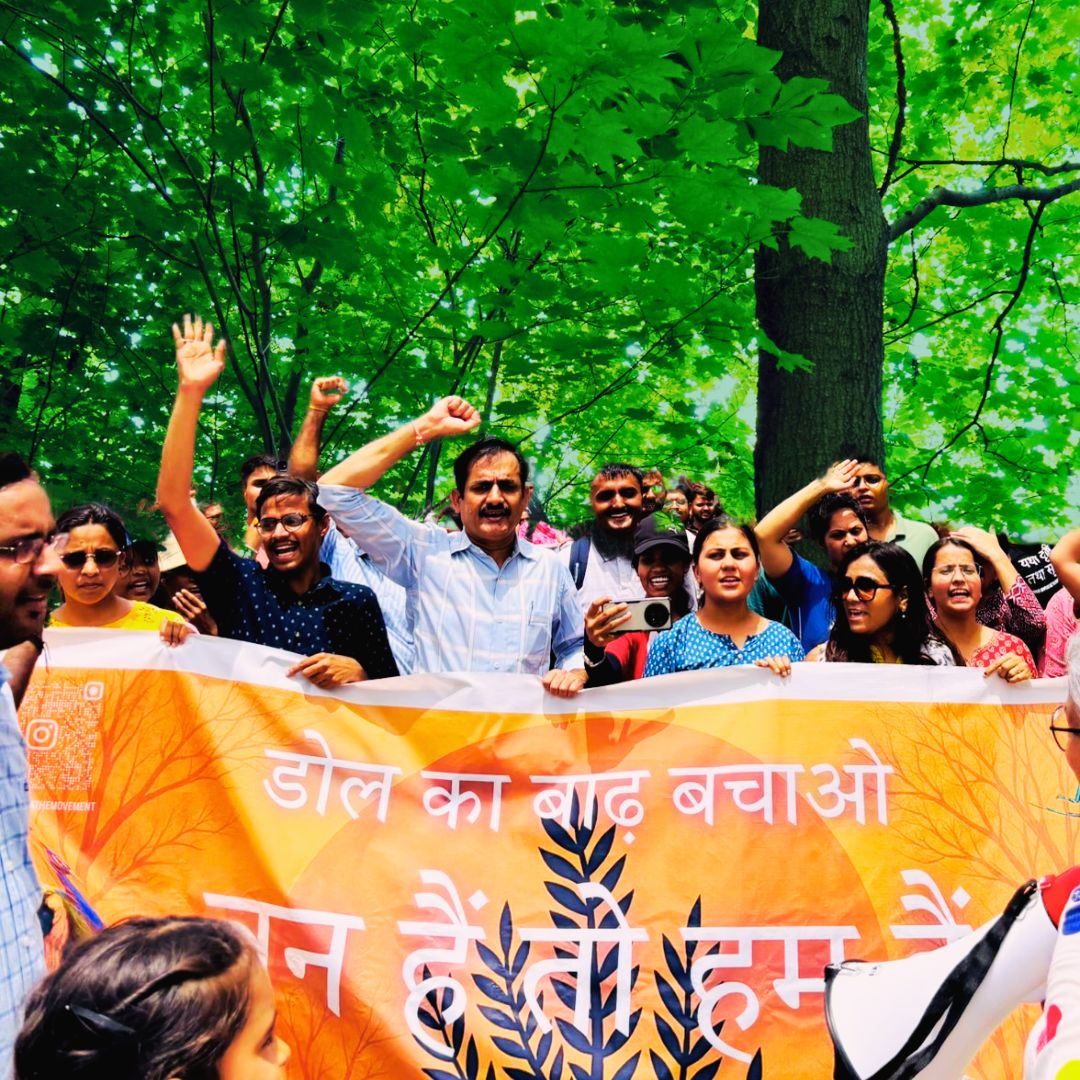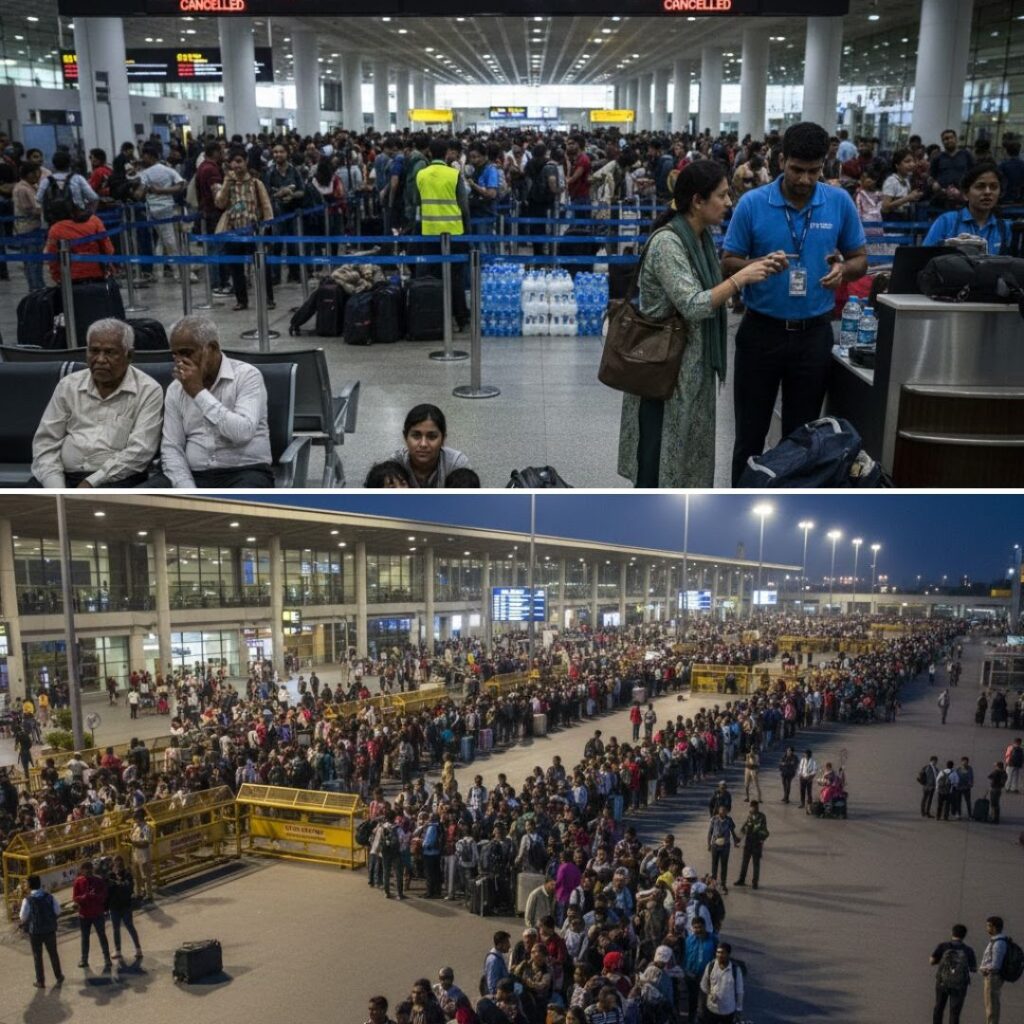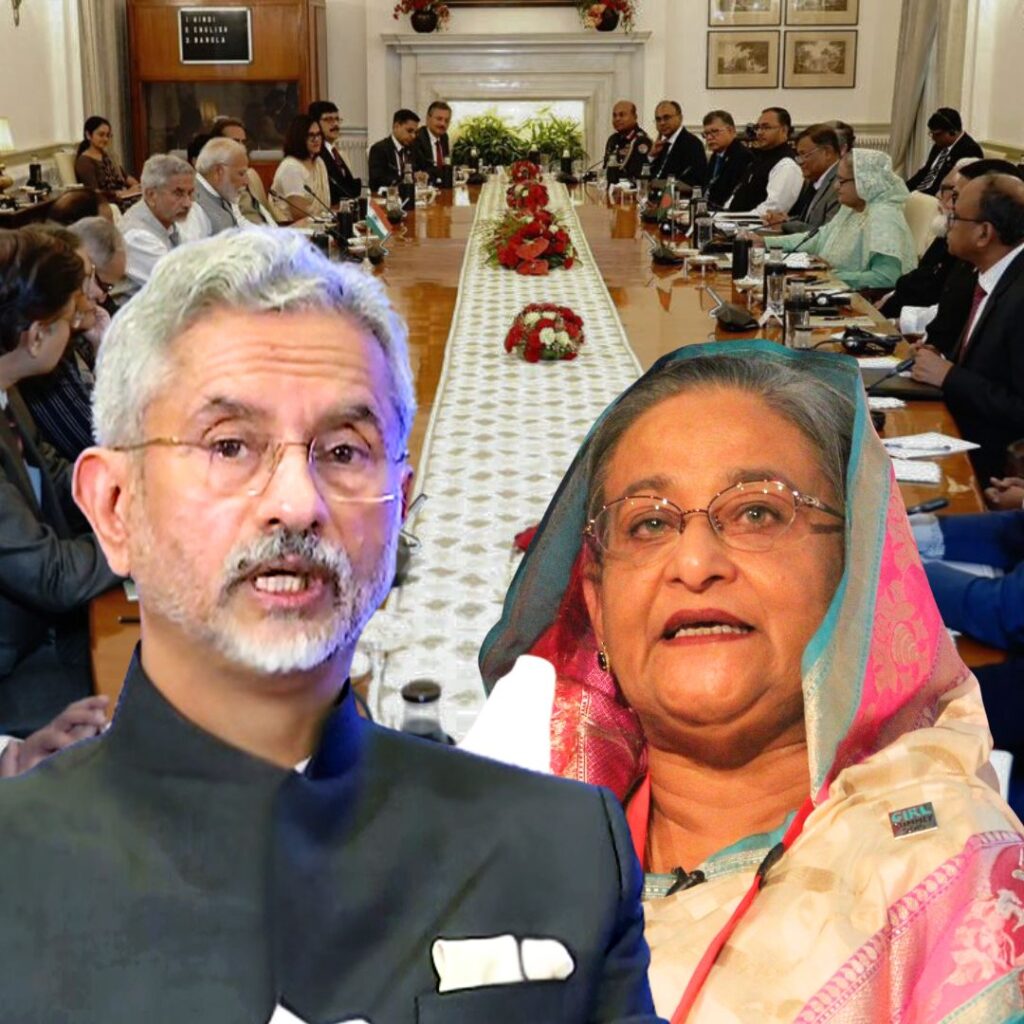Hundreds of Jaipur residents—including men, women, children, the elderly, and social rights activists—formed a human chain on Sunday, June 1, 2025, to protest the large-scale felling of nearly 2,500 trees in the Dol Ka Badh forest. Organised under the ‘Save Dol Ka Badh’ campaign, the demonstration directly challenges the Rajasthan government and RIICO’s plan to clear the forest for the Prime Minister Unity Mall and other commercial projects.
Protesters argue that this move will irreparably damage Jaipur’s ecological balance, threaten biodiversity, and worsen air quality. While government officials insist the development is vital for economic progress, campaigners demand alternative solutions and the preservation of Dol Ka Badh as a biodiversity park.
Jaipur’s ‘Green Lungs’ Face the Axe
Dol Ka Badh, a 100-acre forest along the Dravyavati River, is often referred to as the “lungs of south Jaipur.” It is home to over 2,400 mature trees, including the revered Khejri tree, Rajasthan’s state tree, which plays a crucial role in maintaining the local ecosystem. The forest also shelters more than 60 bird species and a variety of wildlife, making it a biodiversity hotspot in the heart of the city.
On Sunday, protesters from all walks of life formed a human chain encircling the forest, holding placards and chanting slogans to raise awareness. Many activists have taken to geotagging trees and meticulously documenting ongoing felling, claiming that contractors have resorted to cutting trees at night to evade public scrutiny. “We do not want the cutting down of trees in such large numbers to take place here.
If allowed, it will cause irreparable harm to the environment and the city’s future,” said one of the campaign’s organisers. Residents have also reported a noticeable decline in bird sightings and a rise in dust and heat since tree cutting began.
Development Versus Conservation: A City at Crossroads
The Rajasthan government, in partnership with RIICO, has earmarked Dol Ka Badh for the construction of the Prime Minister Unity Mall, fintech parks, and other commercial complexes, arguing that these projects will bring jobs and economic growth to Jaipur. However, environmentalists and local citizens are not convinced.
They point out that Dol Ka Badh is one of the last remaining urban forests in Jaipur and warn that its destruction will exacerbate the city’s already critical air pollution and urban heat problems. The protests have intensified, with daily sit-ins, social media campaigns, and even the detention of peaceful demonstrators. Activists have repeatedly appealed to Deputy Chief Minister Diya Kumari—who previously supported saving Dol Ka Badh while in opposition—but have yet to receive a public response.
Protesters have proposed compromises, such as limiting development to less densely forested areas and officially designating the core forest as a biodiversity park, but say their suggestions have been largely ignored by authorities.
योद्धा तैयार हैं रणभूमि में… 'विकास' के नाम पर 'हरियाली की उखड़ती साँसों' को रोकने के लिए..!!
— media_kesari (@HimaJournalist) June 1, 2025
Dol Ka Badh Movement
Dol Ka Badh, Jaipur’s last urban forest, is under threat… pic.twitter.com/TbBmjxcQpa
The Logical Indian’s Perspective
The Logical Indian stands firmly with the people of Jaipur in their fight to protect Dol Ka Badh. The unity and determination shown by citizens, especially the youth and grassroots activists, reflect a growing awareness of the need for sustainable urban development.
We believe that true progress is measured not just by economic gains, but by the ability to preserve our natural heritage for future generations. Authorities must listen to the voices of the people and seek solutions that balance development with ecological responsibility. Could Jaipur become a model for other Indian cities by finding innovative ways to harmonise growth and green spaces?











